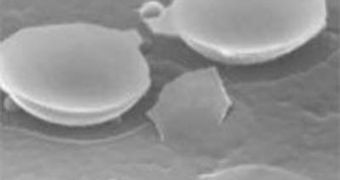The physics world is currently engaged in a large-scale debate, which seeks to establish whether the tiny lenses a research group from the Pohang University of Science and Technology, in South Korea, created are indeed able to break the diffraction limit. The theory holds that no type of lens can see details that are smaller than half the wavelength of the light doing the imaging. If the observations are done in visible light, then the size of the objects cannot be larger than a few hundred nanometers.
The self-assembling structures created by the Pohang team are reportedly able to resolve details of line just 250 nanometres across, which means that the diffraction limit may have been exceeded. “This clearly shows you can have a lens beyond the diffraction limit,” Kwang Kim, the physicist in charge of the South Korean group, says. The limit was defined for the first time by German Physicist Ernst Abbe, back in 1873, and has not been breached since.
But other scientists, such as University of California in Berkeley (UCB) Subdiffraction Imaging Specialist Xiang Zhang, believe that the new constructs are not an indicator that the limit has been broken after all these years. “I am not convinced,” he says, quoted by Nature News. Together with other researchers, he argues that the lenses developed by Kim and colleagues are, in fact, new types of lenses, which, through their properties, can appear to break the limit at times, without actually doing it.
Kim argues that the lenses work because they capture “evanescent waves,” which are waves carrying subdiffraction information in large amounts, but which disappear within a few nanometers from the object emitting them. Theoretically, other research teams have shown, by capturing these formations, it may be possible to resolve details below the diffraction limit. Critic Jean Schleipen, who is a physicist at the Philips Research Laboratories, in Eindhoven, the Netherlands, argues that Kim's construct “is clearly what you would normally call a solid immersion lens and nothing more.”
If actual lenses able to resolve details 200 nanometers across or less would be created, they would pave the way towards observing phenomena at the nanoscale in real time, and not just after they happen. DNA, molecules and viruses could also be viewed optically, without the use of the complex imaging techniques required today. Details of the small devices appear in this week's issue of the journal Nature.

 14 DAY TRIAL //
14 DAY TRIAL //